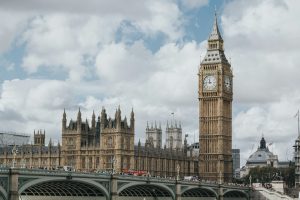Introduction
Poland was the first country invaded in World War II. The war began on September 1, 1939, when Nazi Germany invaded Poland, followed by a Soviet invasion from the east on September 17, as part of a secret agreement (the Molotov-Ribbentrop Pact). This led to Poland being divided and occupied by two totalitarian regimes.
- Auschwitz-Birkenau Memorial and Museum
Located near the town of Oswięcim, the Auschwitz-Birkenau complex is perhaps the most well-known symbol of the Holocaust. It was the largest Nazi concentration and extermination camp, where over 1.1 million people, mostly Jews, were murdered. Today, the memorial includes preserved barracks, watchtowers, gas chambers, and crematoria. Visitors can walk the grounds, visit museum exhibits, and hear the stories of those who perished. It is a sobering experience and a crucial site for understanding the scale of Nazi crimes.
- Majdanek Concentration Camp
Situated on the outskirts of Lublin, Majdanek is one of the most well preserved Nazi camps in Europe. Unlike Auschwitz, the Soviet army liberated it almost intact in 1944. Majdanek was both a labor and extermination camp, where tens of thousands were murdered. The site includes original buildings, crematoria, and a massive mausoleum containing the ashes of victims. Educational exhibits detail the lives of prisoners and the camp’s operations.
- Treblinka Extermination Camp Memorial
Treblinka, located northeast of Warsaw, was a Nazi death camp where around 870,000 people, mainly Jews, were murdered in just over a year. Unlike Auschwitz, Treblinka was dismantled by the Nazis to hide their crimes. Today, the site features a haunting memorial: 17,000 stone markers, each symbolizing a lost community, and a large central monument. The absence of buildings makes the silence at Treblinka even more powerful.
- Warsaw Uprising Museum
This modern, interactive museum in Warsaw tells the story of the 1944 Warsaw Uprising, when Polish resistance fighters battled German occupiers for 63 days. Though ultimately crushed, the uprising remains a symbol of Polish bravery and determination. The museum includes personal artifacts, film footage, reconstructed streets, and multimedia displays that immerse visitors in the atmosphere of wartime Warsaw.
- POLIN Museum of the History of Polish Jews
Located in Warsaw on the site of the former Jewish Ghetto, the POLIN Museum is not solely a war memorial but is essential for understanding the full context of Jewish life in Poland before, during, and after WWII. One of its key exhibits focuses on the Holocaust, the Warsaw Ghetto, and Jewish resistance. It provides a broader cultural and historical perspective that deepens the impact of visits to other memorial sites.
- Westerplatte Peninsula Memorial
Westerplatte, near Gdansk, is where WWII began. On September 1, 1939, German forces attacked the Polish garrison stationed here, marking the war’s first battle. Despite overwhelming odds, the defenders held out for seven days. Today, the site includes ruins of the barracks, monuments, and a large stone memorial. The Westerplatte Monument honors the bravery of the Polish defenders and serves as a symbol of resistance.
- Schindler’s Factory Museum (Krakow)
Oskar Schindler’s enamelware factory in Krakow is now a museum that focuses on the city’s occupation during WWII. Through powerful exhibitions, it tells the story of Schindler’s efforts to save over 1,200 Jews from deportation and death. The museum also details everyday life under Nazi rule and includes many personal stories and artifacts. It’s a key site for understanding the complexity of human choices during the war.
- Warsaw Ghetto Heroes Monument
This striking monument stands in Warsaw at the site of the former Jewish Ghetto. It honors the fighters of the Warsaw Ghetto Uprising of 1943, who resisted Nazi efforts to deport the remaining Jews to Treblinka. The monument was unveiled in 1948 and has since become a central place for Holocaust commemoration ceremonies. The adjacent POLIN Museum adds further historical context.
- Łodz Jewish Cemetery and Radegast Station
The city of Lodz had a large Jewish population before the war. The Jewish Cemetery is one of the largest in Europe and includes many Holocaust-related graves and memorials. Nearby, Radegast Station is the site from which thousands of Jews were deported to death camps. The station has been transformed into a memorial, with freight cars and exhibits documenting the journey to Treblinka and Auschwitz.
- Pawiak Prison Museum (Warsaw)
During the Nazi occupation, Pawiak Prison in Warsaw was a site of terror. Thousands of Poles, including resistance members and civilians, were imprisoned, tortured, or executed here. Today,
Where to stay in Poland
- Warsaw (Capital)
- Why stay? Great for history, culture, museums, and nightlife.
- Best areas:
- Srodmiescie (City Center): Close to Old Town, museums, and shopping.
- Praga: Trendy and artsy, across the Vistula River.
- Recommended options:
- Luxury: Hotel Bristol, Raffles Europejski
- Mid-range: PURO Hotel, Hotel Polonia Palace
- Budget: Oki Doki Hostel, Safestay Warsaw
- Krakow
- Why stay? Beautiful medieval Old Town, Jewish history, and proximity to Auschwitz.
- Best areas:
- Old Town (Stare Miasto): Walkable, historic, central.
- Kazimierz: Former Jewish quarter, now hip and vibrant.
- Recommended options:
- Luxury: Hotel Stary, Sheraton Grand
- Mid-range: Hotel Grodek, PURO Krakow
- Budget: Greg & Tom Hostel, Mundo Hostel
- Gdansk
- Why stay? Coastal charm, WWII history (Westerplatte), and nearby beaches.
- Best areas:
- Main Town (Głowne Miasto): Historic and lively.
- Oliwa: Quieter, with parks and a cathedral.
- Recommended options:
- Luxury: Radisson Blu, Hotel Podewils
- Mid-range: Q Hotel Grand Cru
- Budget: 3City Hostel, La Guitarra Hostel
Things to Do in Poland
- Explore Historic Cities
- Krakow Old Town: Visit the Main Market Square, Wawel Castle, and St. Mary’s Basilica.
- Warsaw Old Town: Rebuilt after WWII, it’s a UNESCO site filled with charm and history.
- Gdańsk: Walk along the Long Market, see the medieval Crane, and explore WWII history.
- Discover Jewish and WWII History
- Auschwitz-Birkenau: Take a guided tour to understand the Holocaust.
- Warsaw Uprising Museum: Learn about the 1944 resistance against the Nazis.
- Schindler’s Factory Museum (Krakow): Immersive exhibits on wartime Krakow.
- POLIN Museum (Warsaw): Explore 1,000 years of Jewish life in Poland.
- Enjoy Nature and Outdoor Activities
- Tatra Mountains (Zakopane): Hike, ski, or take a cable car to Kasprowy Wierch.
- Białowieża Forest: Visit Europe’s last primeval forest and spot bison.
- Masurian Lake District: Perfect for kayaking, sailing, or a peaceful retreat.
Day trip from Poland
- Wieliczka Salt Mine (from Krakow)
- Why go? A UNESCO World Heritage Site with stunning underground chapels, sculptures, and tunnels carved entirely out of salt.
- Travel time: ~30 minutes by train or car from Krakow.
- What to do: Guided underground tour, St. Kinga’s Chapel, salt sculptures, and historical mining equipment.
- Auschwitz-Birkenau Memorial (from Krakow or Katowice)
- Why go? The most powerful and sobering Holocaust memorial in Europe.
- Travel time: ~1.5 hours by car or bus from Krakow.
- What to do: Guided tour of Auschwitz I and Birkenau (Auschwitz II), museum exhibits, barracks, and gas chambers.
- Malbork Castle (from Gdansk)
- Why go? Europe’s largest brick castle, built by the Teutonic Knights.
- Travel time: ~1 hour by train from Gdansk.
- What to do: Explore castle towers, medieval armor, grand halls, and scenic riverside views.




